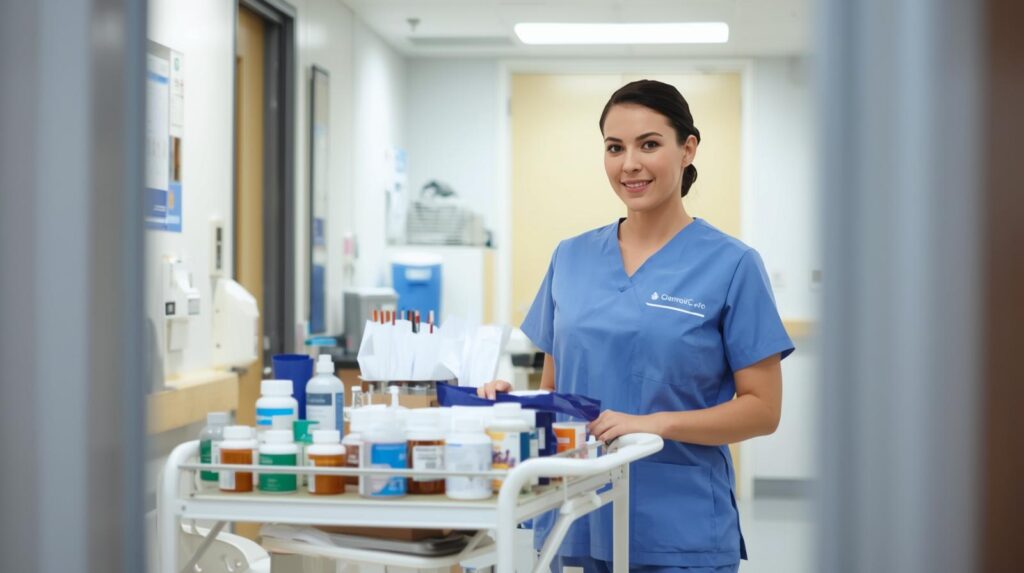
Medication is one of the most powerful tools in healthcare. It helps diagnose, prevent, and treat illness while improving quality of life. But with this power comes responsibility. For care workers, safe medication administration is not just a routine task—it’s a safeguard that protects the people you support.
In fact, research has shown that nearly half of the most serious medication-related incidents result from mistakes during administration. These errors—wrong doses, missed doses, or delays—can have devastating consequences. That’s why training, vigilance, and adherence to best practices are essential.
The Legal and Ethical Framework
Care workers must operate within clear rules to ensure safety:
-
Regulations: Laws such as the Medicines Act 1968 and the Misuse of Drugs Act 1971 set strict standards for medication use.
-
Employer Policies: Organisations create procedures based on national laws.
-
Care Plans: Individualised instructions tailored to each service user.
Beyond regulations, ethical principles are key. Informed consent is a cornerstone: service users have the right to know what medication they’re taking and why. Covert administration (hiding medication in food or drink) should only ever be a last resort, guided by medical advice and ethical approval.
Understanding Medications
Care workers need to confidently interpret medication labels and instructions. Mistakes here can cause serious harm.
Medications are classified as:
-
GSL (General Sales List) – e.g., paracetamol, available in shops.
-
P (Pharmacy-only) – available only under pharmacist supervision.
-
POM (Prescription Only Medicine) – supplied by prescription for a named person.
-
CD (Controlled Drugs) – e.g., morphine, subject to strict regulations.
-
Household/Herbal Remedies – which can still interact with prescriptions.
Knowing how to read labels, understand dosage terms, and space medications correctly helps prevent avoidable errors.
The Core Administration Process
To minimise risk, care workers follow the “6 Rights” of medication:
-
Right Person
-
Right Medicine
-
Right Dose
-
Right Time
-
Right Route
-
Right to Refuse
Pre-administration checks (confirming identity, checking for allergies, reviewing the MAR chart) are followed by safe handling procedures and post-administration documentation. Consistency here saves lives.
Routes of Administration
Not all medications are given the same way. Care workers may be trained to administer:
-
Oral (tablets, liquids)
-
Buccal (between gum and cheek)
-
Topical (creams, ointments, patches)
-
Inhalers, eye/ear drops
Specialist techniques such as injections, PEG feeding, or insulin administration require additional training and must only be done when authorised.
Storage, Disposal, and Documentation
Safe medication management doesn’t end with administration. Correct storage (locked cupboards, secure trolleys, temperature control) protects both people and medication integrity. Disposal must follow strict rules—especially for controlled drugs, which require special recording and destruction methods.
Every action must be documented in the Medication Administration Record (MAR). Accurate records provide accountability, ensure continuity of care, and protect both staff and service users.
When Errors Happen
Despite best efforts, errors and adverse reactions can occur. The key is transparency: report immediately, follow policy, and prioritise the safety of the service user. Common signs of adverse reactions include rashes, breathing difficulties, nausea, or sudden behavioural changes. Acting quickly can save lives.
Final Thoughts
Safe medication administration is more than a checklist—it’s a commitment to dignity, safety, and professional care. For care workers, every dose given correctly is a step toward better health, comfort, and trust.
By following the legal framework, maintaining vigilance, and upholding ethical standards, you ensure that the people you support receive not just medicine, but truly safe and compassionate care.
